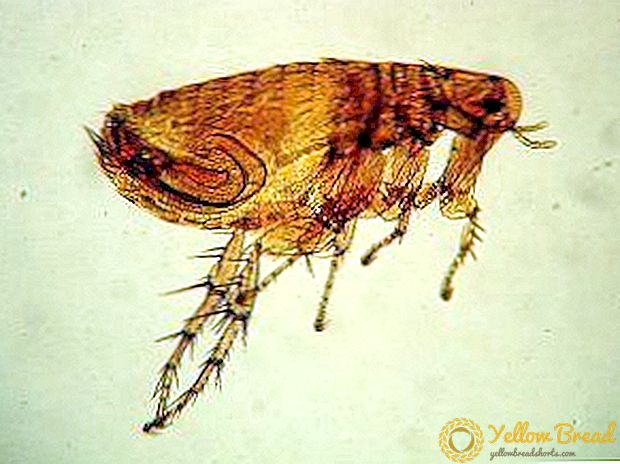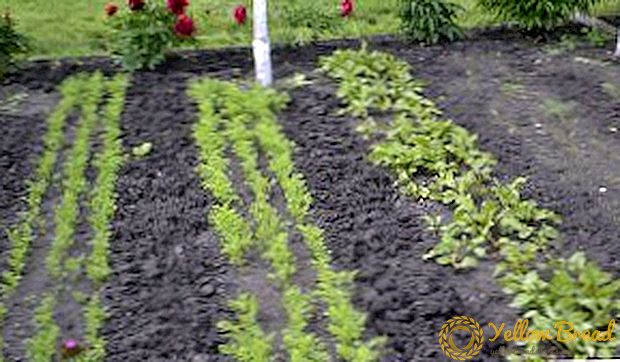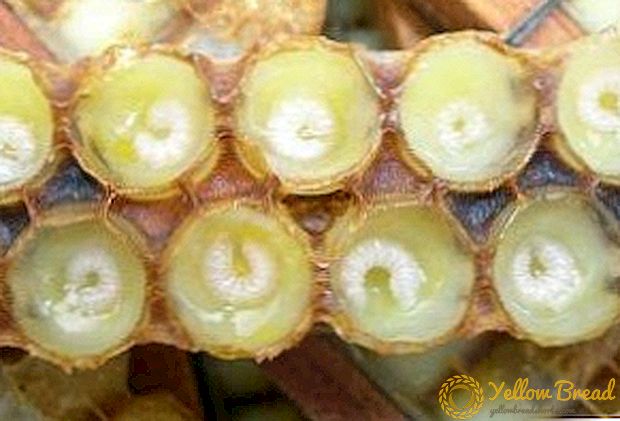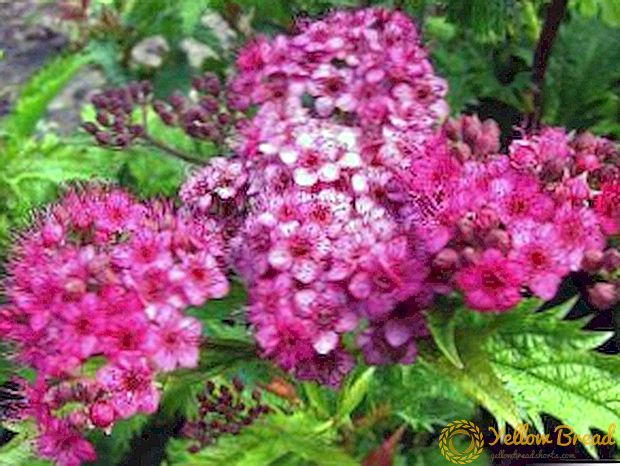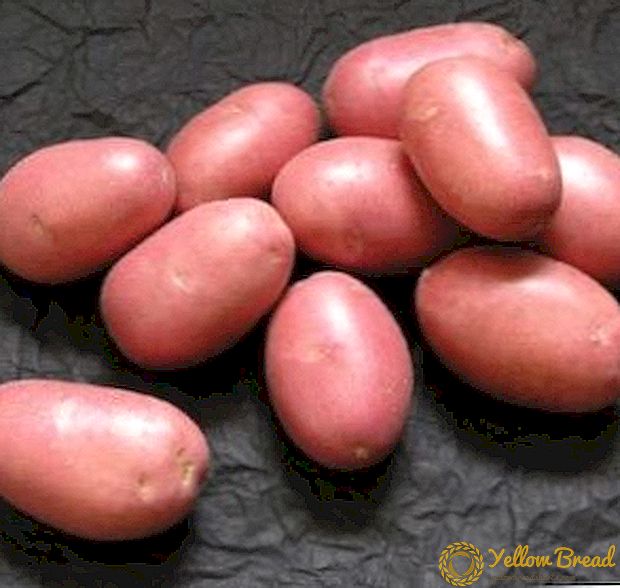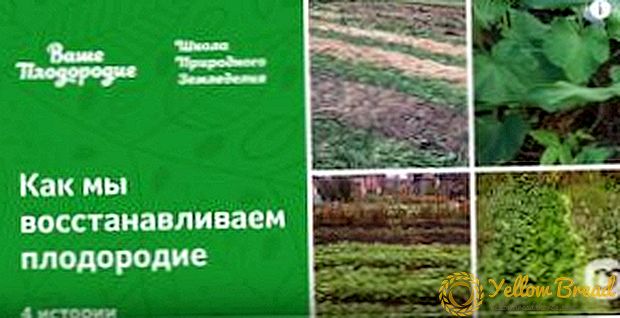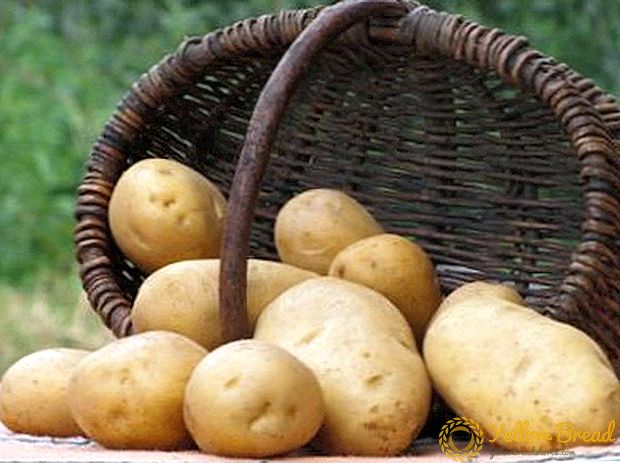
Super early varieties allow you to harvest potatoes in the middle of summer and be the first to enjoy the taste of young tubers. Breeders offer many interesting varieties, among which the worthy place is occupied by the Minerva.
The potato turns out tasty, beautiful, fruitful. The first tubers can be broken in 35 days after planting, the maximum yield is collected at the end of the growing season.
Learn all about the Minerva potatoes - a description of the variety, photos, characteristics of the crop, the appearance and rules of cultivation on your plot!
Potato "Minerva": description of the variety and photos
Characteristic varieties of potatoes "Minerva":
| Grade name | Minerva |
| general characteristics | very early Dutch variety, resistant to diseases, poorly tolerated drought |
| Gestation period | 45-50 days |
| Starch content | 15-18% |
| Mass of commercial tubers | 120-240 gr |
| The number of tubers in the bush | 15-20 |
| Yield | up to 430 c / ha |
| Consumer quality | good taste, lightly boiled soft, suitable for frying, salads and soups |
| Recumbency | 94% |
| Skin color | yellow |
| Pulp color | white |
| Preferred growing regions | any soil and climate |
| Disease resistance | resistant to potato viruses, cancer, golden nematode and scab, moderately resistant to late blight, low resistant to blackleg and root rot |
| Features of growing | recommended soil based on black soil or sand, as well as preliminary germination and the formation of high ridges during planting, low watering reduces the yield |
| Originator | company Solana (Netherlands) |
What does the Minerva potato look like, look at the photo below:



Yield characteristics
Potato varieties "Minerva" refers to the dining room superearly. Tubers quickly gain weight, the first harvest can be removed already 35 days after germination. On fertile soils, early harvest reaches 230 centners per hectare.
Collected tubers well keptwithout losing commercial properties. Transportation is possible.
 The bush is compact, upright, not excessively branched, with moderate formation of green mass. The leaves are medium in size, dark green with slightly wavy edges. The corolla is compact, large white flowers fall quickly, without tying berries.
The bush is compact, upright, not excessively branched, with moderate formation of green mass. The leaves are medium in size, dark green with slightly wavy edges. The corolla is compact, large white flowers fall quickly, without tying berries.
The root system is well developed, under each bush is formed 15-20 even large tubers. There are a few unofficial trifles, it can be used as a seed. Root crops do not degenerate, potatoes harvested at their own site demonstrate all the qualities of the mother plants.
The agrotechnology of growing potatoes is simple, with the necessary care, the tubers ripen together and quickly. Variety prefers fertile soil based on black soil or sand. Increase the nutritional value will help the introduction of peat, manure, humus.
Plants need moderate moisture. constant drought significantly reduces yields. Shrubs pile up, forming high ridges. To get rid of weeds, mulching with straw or mowed grass will help.
You can compare the yield of Minerva with other varieties based on the data in the table:
| Grade name | Yield |
| Melody | 180-640 c / ha |
| Margarita | 300-400 centners / ha |
| Alladin | 450-500 c / ha |
| Courage | 160-430 c / ha |
| Beauty | 400-450 c / ha |
| Grenada | 600 kg / ha |
| The hostess | 180-380 c / ha |
| Vector | 670 c / ha |
| Mozart | 200-330 c / ha |
| Sifra | 180-400 centners / ha |
Sort resistant to many dangerous diseases: potato cancer, golden cyst nematode, common scab, Fusarium, Alternaria, and Verticillia, various viruses.
Tubers have a pleasant delicate flavor. The moderate content of starch does not allow them to darken and fall apartcooked dishes retain beautiful white color. Root vegetables can be fried, boiled, stuffed or baked, they make a delicious low-fat mashed potatoes. It can be used for industrial purposes, frozen french fries, vegetable mixes, soup dressings are made of tubers.
Origin
The variety "Minerva" bred by Dutch breeders. It is brought in the State registry of the Russian Federation, recommended for cultivation in the majority of climatic zones and the countries. Depending on the weather, landing times may shift.
In warm areas, 2 yields can be obtained. potatoes over the summer. The grade is recommended for farmer or amateur cultivation.
Advantages and disadvantages
The main features of the variety include:
- good taste;
- very early ripening;
- high yield;
- excellent keeping quality;
- tubers quickly accumulate mass;
- 2 yields per year are possible;
- potatoes suffer temperature drops or lack of moisture;
- resistance to major diseases.
A small disadvantage typical of very early varieties can be considered not too bright taste. Productivity depends on climatic conditions and soil fertility.
In the table below you will find the indicators of the main important characteristics of other varieties of potatoes for comparison with Minerva:
| Grade name | Mass of commodity tubers (grams) | Recumbency |
| Queen Anne | 80-150 | 92% |
| League | 90-125 | 93% |
| Milena | 90-100 | 95% |
| Elmundo | 100-135 | 97% |
| Serpanok | 85-145 | 94% |
| Svitanok Kiev | 90-120 | 95% |
| Cheri | 100-160 | 91% |
| Bryansk delicacy | 75-120 | 94% |
Features of growing
 For planting are selected large tubers weighing at least 80 g. In adverse weather conditions, they will provide plants with an adequate supply of nutrients. To stimulate growth, it is recommended to warm the tubers in warm water, and then process them with growth stimulants.
For planting are selected large tubers weighing at least 80 g. In adverse weather conditions, they will provide plants with an adequate supply of nutrients. To stimulate growth, it is recommended to warm the tubers in warm water, and then process them with growth stimulants.
For greater safety, the seed is sprayed abundantly with an aqueous solution of fungicide. After processing, the tubers are dried thoroughly, all components must be well absorbed. Then the tubers are germinated in the light. The appearance of strong white shoots about 2 cm long is a signal for immediate landing.
Propagated potatoes can be seeds. Germination is average, in the first year the yield is significantly lower, but in the second season the plants will demonstrate all the best qualities, the tubers will be larger.
It’s better to plant potatoes in the heated soil, its temperature should exceed 10 degrees. It is more convenient to place the seed in rows, the tubers are laid out in holes, fertilized with humus and wood ash. Shrubs are placed at a distance of 30-35 cm from each other, the row spacing should not be less than 60 cm. The depth of laying of root crops is about 10 cm.
During the planting season, feed complex fertilizer or diluted mullein. When and how to make dressing read here. Sort moisture sensitive. For maximum yield, it is recommended to organize drip irrigation.
So that the soil does not dry out, and the weeds do not bother the young potatoes, the rows between rows are mulched with mowed grass, straw or peat. 1-2 times planting spud, forming high ridges.
Read also about other methods of growing potatoes: Dutch technology, as well as in bags and barrels.
A week before harvesting is recommended to cut the topsThis will allow the tubers to quickly gain commercial weight. After digging up, the roots are dried on the border or under a canopy, sorted and cleaned in a cool dark place. Seed for the next year is stored separately.
Diseases and pests
The variety is resistant to dangerous solanaceous diseases: potato cancer, various viruses, golden cyst nematode, common scab. Early maturation protects planting against late blight. For prevention, pre-treatment of tubers and soil with complex fungicides is recommended.
Young green potato attracts a variety of pests: Colorado potato beetles, thrips, aphids. For prophylactic purposes, it is useful to spray insecticides, it is better to use toxic drugs before the start of mass flowering.
From insect larvae protect periodic weeding and changing fields for planting. Potatoes are preferably planted alternately with cabbage, legumes, meadow herbs.
 We also bring to your attention useful information about the fight against Colorado beetles in your garden.
We also bring to your attention useful information about the fight against Colorado beetles in your garden.Read articles about the use of chemicals and the use of folk remedies.
As for the storage of the harvest, there is nothing complicated here. Observe the storage period, choose the right place and remember the storage conditions of potatoes in the winter and you will be able to feast on tasty and healthy roots for a long time.

